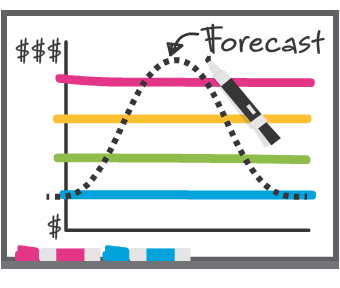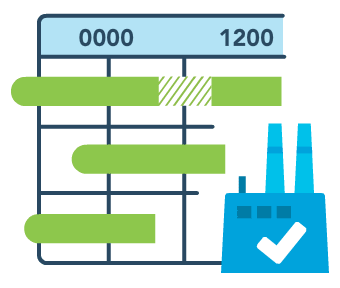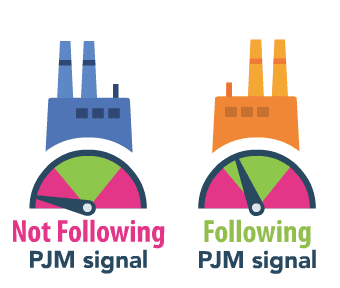How PJM & Generators Continually Balance the Grid
Electricity must be produced and consumed on demand, the instant it is needed.
At all times, the electricity generated and sent out onto the bulk electric power grid must match customers’ demand for it. This requires a constant balancing act achieved by PJM dispatchers working hand-in-hand with generators and other energy suppliers.
Achieving Balance
Dispatchers monitor the grid 24 hours a day, seven days a week, from PJM’s control centers. They use computer algorithms, which can calculate conditions on the system within a minute – faster than any human.
Dispatchers can see system conditions and predict what electricity will be needed on the grid over the next two hours. If the system will not be perfectly balanced, they will need to take action.
There is one additional weight to balance: cost. PJM deploys generators in the most economical way possible, calling on the lowest-cost generation first.
Generator Instructions
Every five minutes, the PJM system transmits a secure electronic signal to markets operations centers that then transmit the signal to generating plants, indicating how many megawatts of electricity they should be producing.
Generators are expected to adjust their output according to this signal. In some cases, ignoring PJM’s dispatch instructions may result in financial penalties.
Regardless of the best planning and monitoring, there will be times when generators encounter a problem with their equipment, resulting in what is called a “forced outage.” PJM dispatchers are always prepared with energy reserves that can be called upon to fill the gap. One way to do this is by asking generators that already are online but not producing at full capacity to increase their output.
The generation scheduling process begins a day ahead of time and is intertwined with PJM’s wholesale energy markets.
Scheduling Generation: The Day-Ahead Market
The Day-Ahead Market is a “forward” market, which means prices are set for energy that will be delivered in the future – in this case, the next day. Hourly prices are calculated based on generator offers, bids from entities such as utility companies that need electricity, scheduled energy trades among PJM members and market-related financial transactions.
- Load-serving entities bid in the amount of energy they would like to purchase.
- Generators submit offers of how much they are willing to supply, and at what cost.
|

|
|
PJM accepts offers from the lowest- to highest-priced generator until it meets the forecasted demand for electricity.
|

|
|
PJM “clears” the generators that have been chosen to run, sending out an operating schedule for the following day.
|

|
|
PJM’s reliability engineers and dispatchers assess whether the cleared generators satisfy reliability requirements and the expected load forecast. Additional generators may be scheduled to meet demand.
|

|
Scheduling Generation: The Real-Time Market
The Real-Time Market is a spot market, meaning electricity is procured for immediate delivery. Current electricity prices are calculated at five-minute intervals for more than 1,000 different pricing points based on actual grid operating conditions and are published on PJM.com.
|
PJM continually follows fluctuations in generation, demand and transmission, sending an electronic signal every five minutes to let generators know what their electricity output should be.
|

|
|
Generators may update their offers up to 65 minutes before the next hour.
|

|
|
If a generator is committed to run by PJM and follows dispatch instructions, it will be compensated. If a generator deviates from PJM’s instructions, it may be charged a penalty.
|

|
Through this continual cycle, PJM, generators and customers work together to balance electricity on the system, enabling PJM to maintain a reliable grid at the lowest reasonable cost.